Special Tools
J 29142 (09915-47341) Oil Filter Wrench
Engine Fluid Level
- Inspect the engine fluid level or condition. If needed, refill or replace the oil.
- Inspect the engine oil level within engine normal operating temperatures as follows:
Note: If checking the oil level under the engine cold condition, oil is not accumulated into the oil pan quickly and the correct level checking can not be performed. Therefore, wait until the temperature reaches the normal operating condition and check the engine oil level.
| 2.1. | After stopping the engine, wait for a few minutes to accumulate oil into the oil pan. |
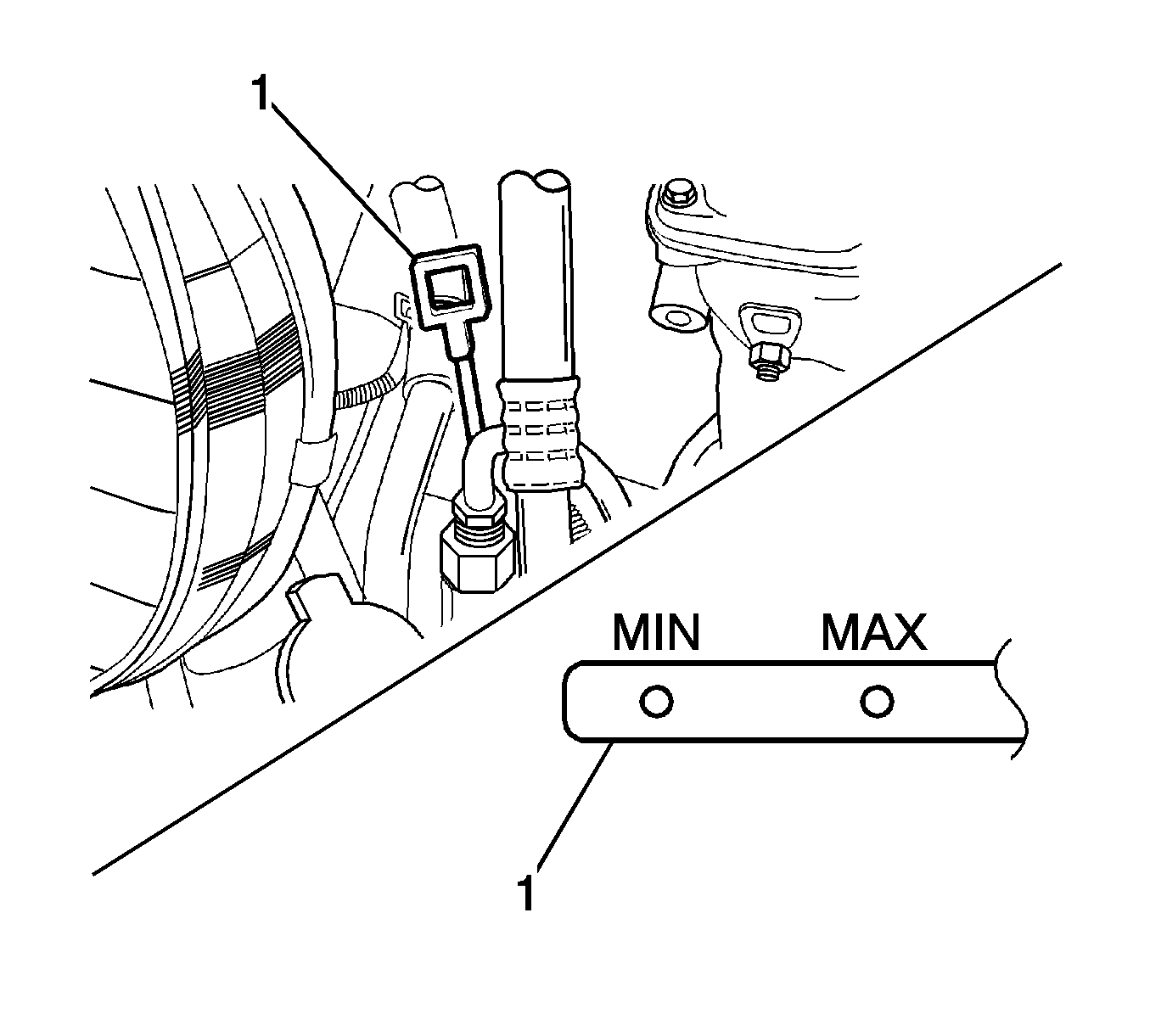
| 2.2. | After pulling out the oil level gage (1), check the oil level. |
| 2.3. | Clean the oil level gage and insert the gage into the guide. |
| 2.4. | After pulling out the oil level gage again, check the oil level and insert the gage into the guide again. |
| Note: The oil level should be between MIN mark and MAX mark. |
| 2.5. | If the oil level is below the MIN mark, refill the engine oil as much as the demanded quantity. |
Changing Engine Oil or Oil Filter
When checking the engine oil level or condition, if needed, change the engine oil, including the filter, as follows:
- After stopping the engine, wait for a few minutes to accumulate oil into the oil pan.
- Remove the oil filter cap (1).
- Remove the oil drain plug (2) and draw oil off.
- After drawing oil completely, tighten the oil drain plug to 30-40 N·m (22-30 lb ft).
- Replace the oil filter using the J 29142 (1).
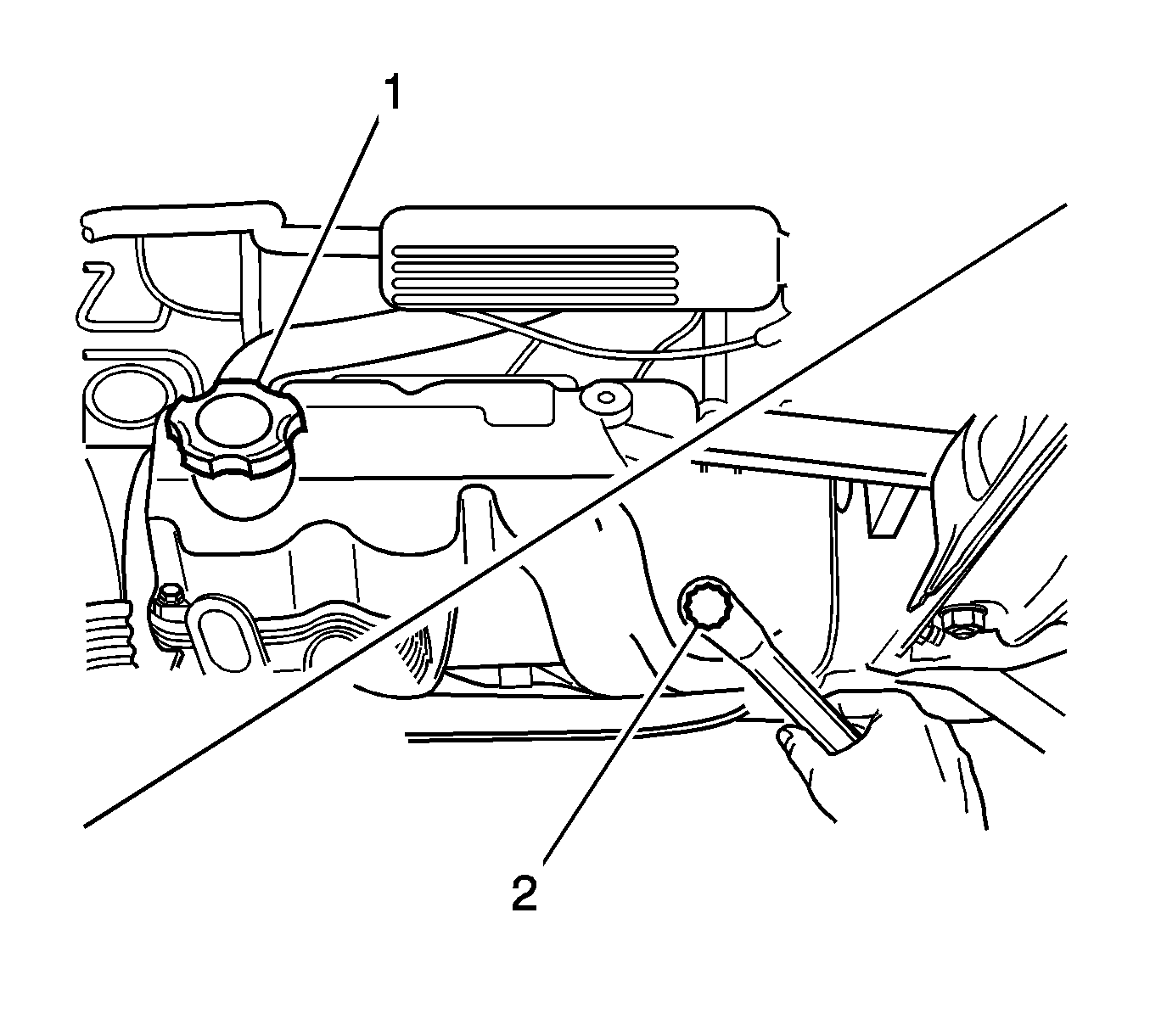
Caution: Refer to Fastener Caution in the Preface section.
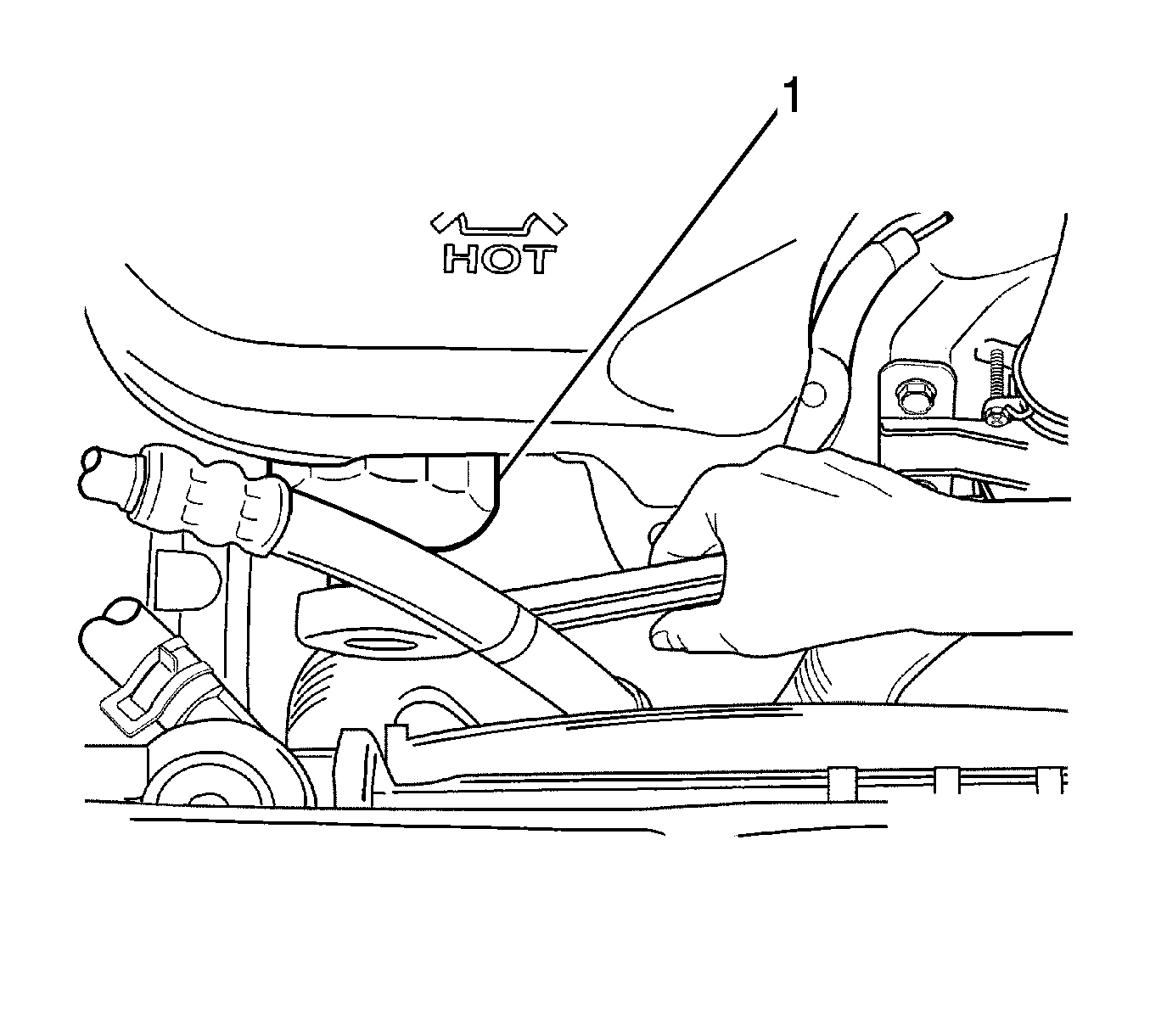
Note: Whenever changing the engine oil, replace the oil filter. When replacing a new oil filter, apply engine oil on the oil filter sealing.
| 5.1. | Remove the air cleaner/resonator/snorkel assembly. |
| 5.2. | After removing the bolts, remove the heat shield. |
| 5.3. | Loosen the power steering pump cap screw and pull the power steering hose into the front. |
| 5.4. | Remove the oil filter. |
Engine Timing Belt Inspection
After checking the timing belt for looseness, crack, wear, or tension, replace the belt if necessary.
Accessory Belt Inspection
Caution: Do not use belt dressing on the drive belt. Belt dressing causes the breakdown of the composition of the drive belt. Failure to follow this recommendation will damage the drive belt.
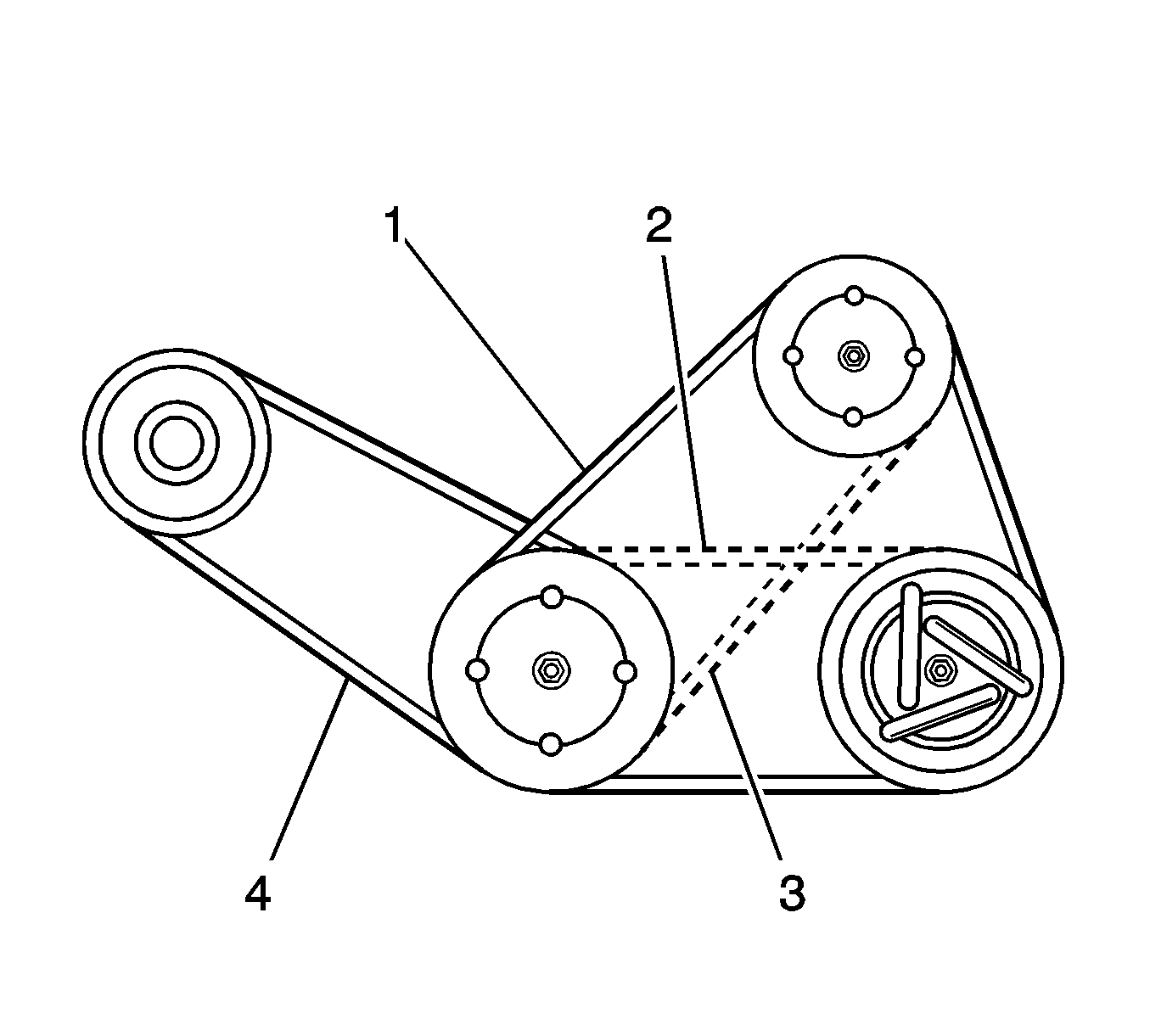
After checking the alternator belt (4), air conditioning/power steering belt (1), air conditioning belt (2), and power steering belt (3) for looseness, crack, wear, or tension, replace the belt if necessary.
Spark Plug Inspection
After checking the spark plug for bad clearance, excessive carbon deposit, worn electrode, or damaged insulator, replace the new one if necessary.
Remove and check the spark plug as follows:
- Pull the high tension cable cap portion (1) and disconnect the high tension cable from the spark plug. If pulling the high tension cable (2), the circuit could be disconnected. Therefore, the cap portion should be used.
- Remove the spark plug from the cylinder head using a wrench.
- Measure the spark plug clearance (1) with the filler gage. If the measured value is not within the specified value, adjust the grounding electrode.
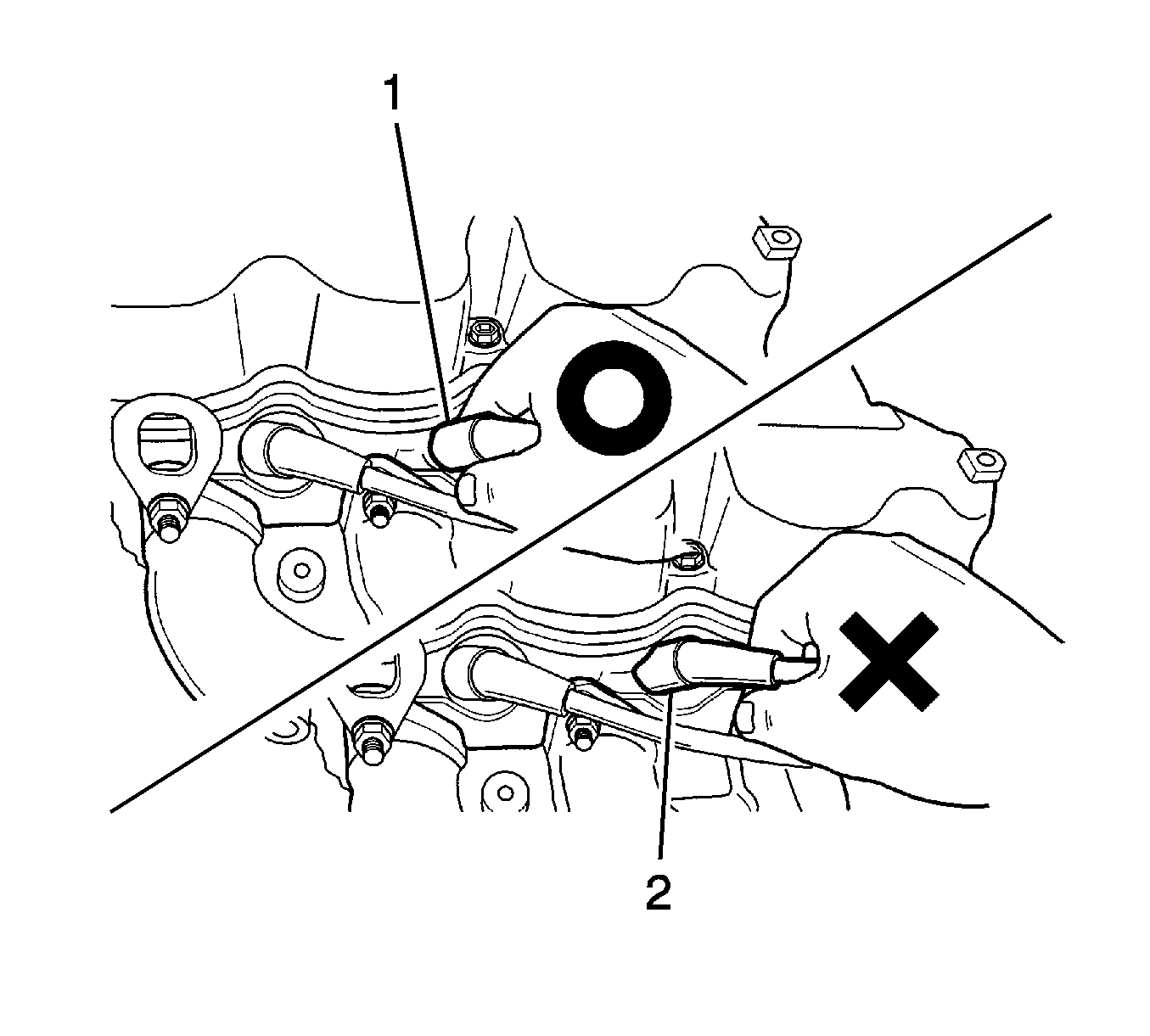
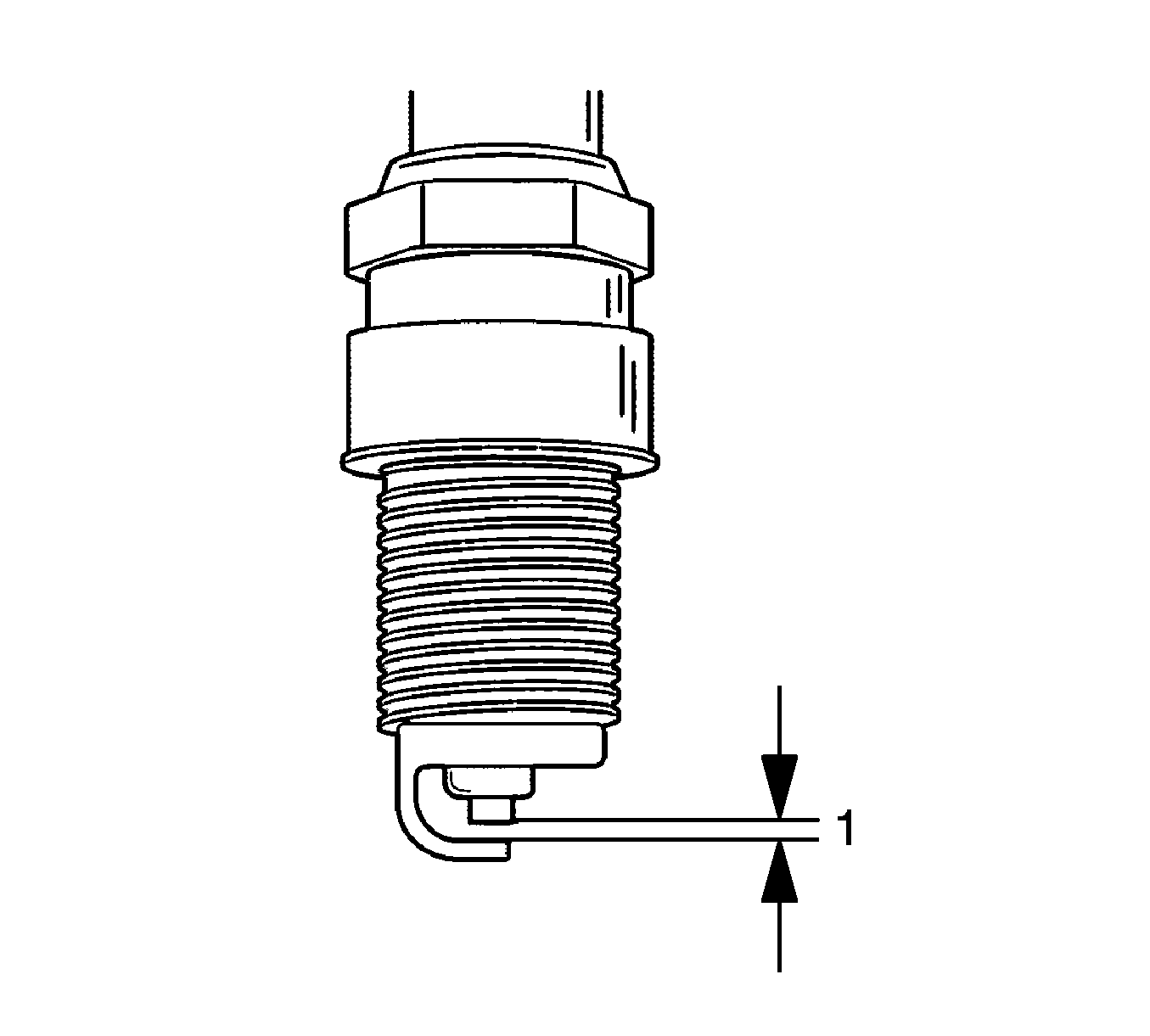
When installing a new spark plug, check the clearance for equality and install it.
Checking the Air Cleaner Element
If the air cleaner element becomes dirty, engine efficiency could be deteriorated.
Be sure to check the element often.
If a vehicle frequently runs on a dusty road, check and replace the element often.
Checking the Fuel Filter
If the fuel filter is used over the specified period, engine efficiency is deteriorated by dust or foreign material.
Therefore, replace a new one within the specified period.
Checking the Fuel System
Check the fuel system as follows:
| • | Check the fuel line or line connection portion for damage or leaks. |
| • | Check the fuel hose surface for damage. |
| • | Check the fuel cap for looseness. |
Checking the Hose System
Check the engine vacuum hose, PCV hose, or canister hose as follows:
| • | Check the hose surface for damage by heat or machine. |
| • | Check the hose for hardening, crack, tear, or coming off. |
